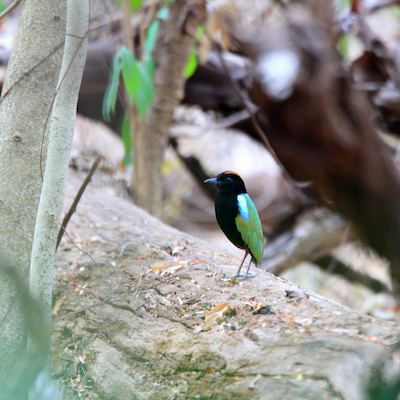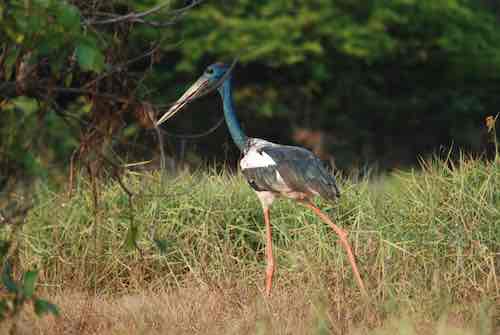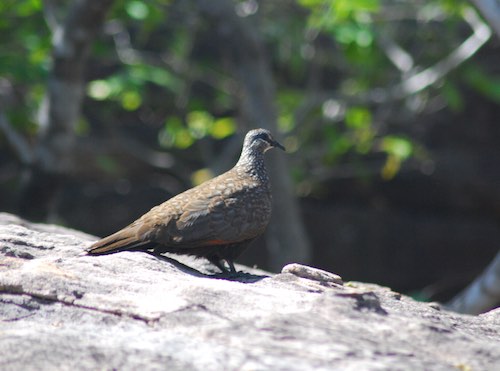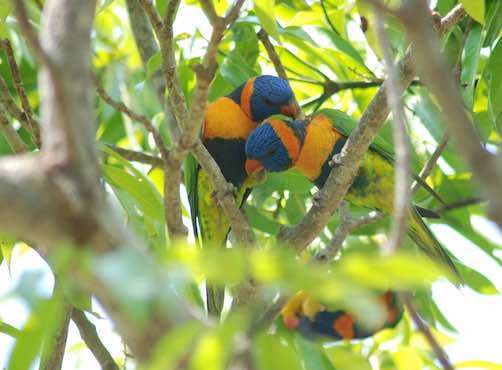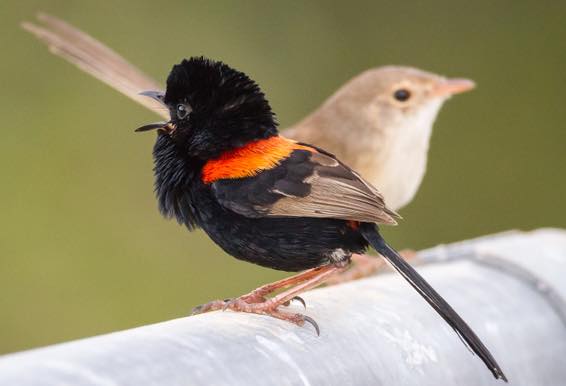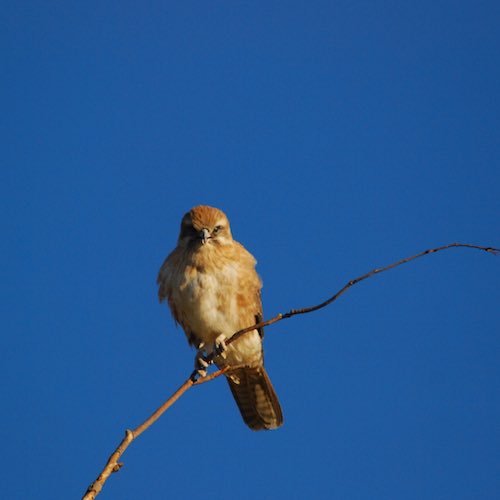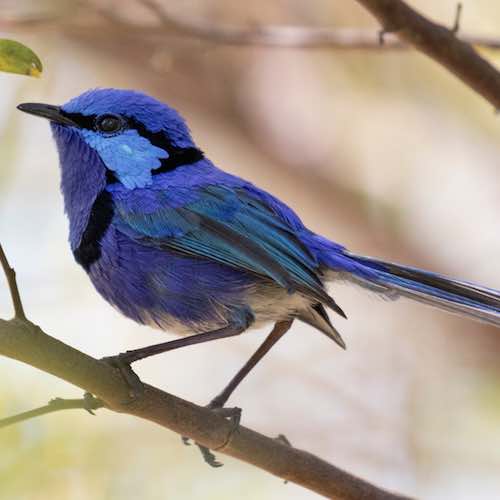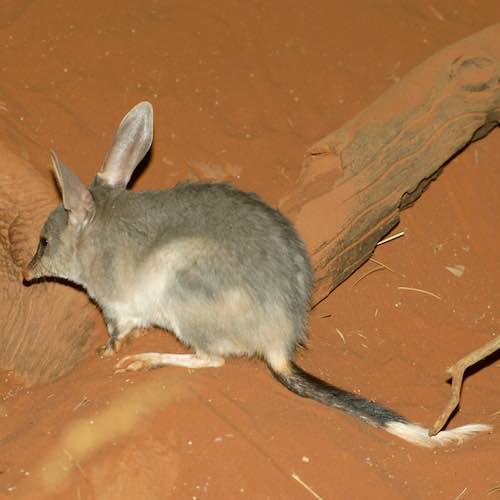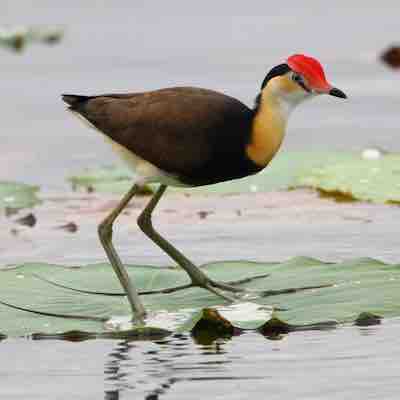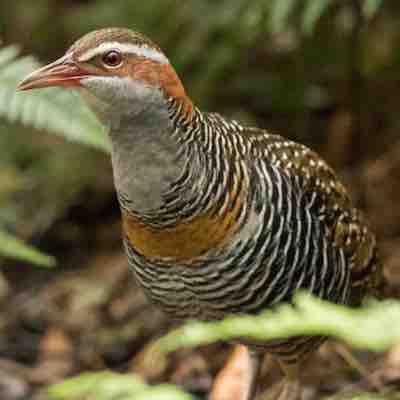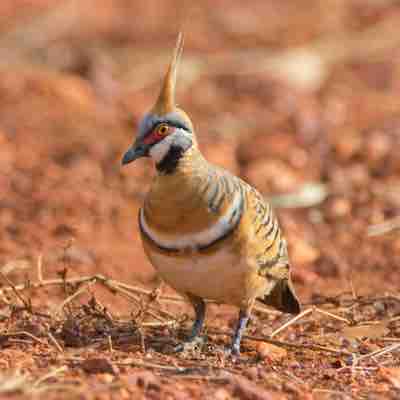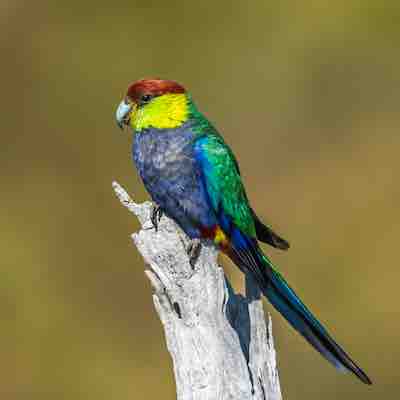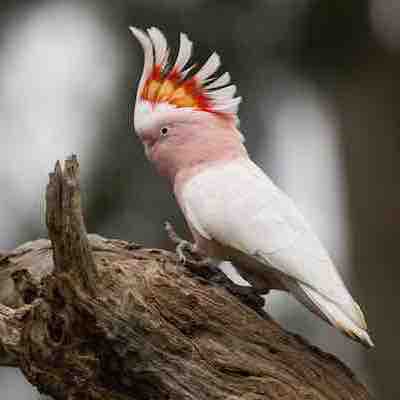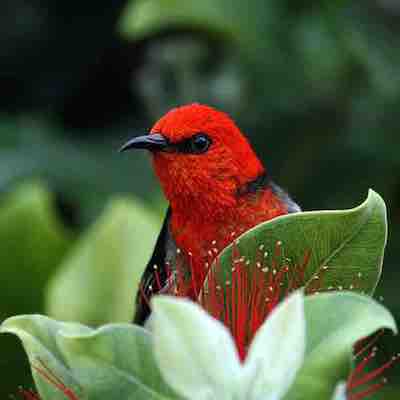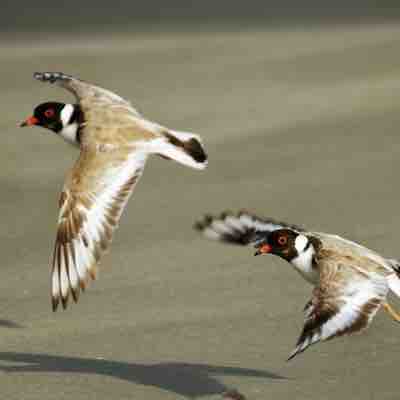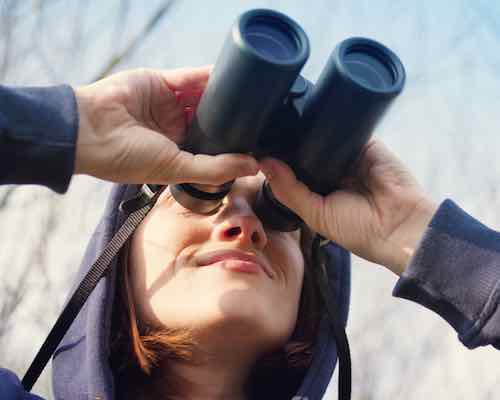Birding in the Northern Territory
Top End
The Top End is home to 11 regional endemics. From tropical savanna and monsoon rainforest to sandstone escarpments and open bushland, this is a region where birds turn up in every habitat. It's not just the avifauna that makes it special - the dramatic landscapes and rich biodiversity make the Top End well worth a visit for any nature enthusiast.
Full Day Birding Tour in Darwin, Fogg Dam & Surrounds
A full-day guided birdwatching tour offers the best opportunity to explore the rich birdlife of Darwin and its surrounding habitats, with more than 300 species recorded in the region. Travelling beyond the city, visit the renowned wetlands of Fogg Dam Conservation Reserve, as well as the Adelaide and Mary River regions - key sites for sought-after species not typically found around Darwin, including the endangered Gouldian Finch.
Whether you’re just starting out, an enthusiastic birder, or a seasoned ornithologist, your expert guide will help you seek out a broad range of species - from Red-necked Avocet to Zitting Cisticola and everything in between.
The tour covers a variety of bird-rich habitats. You’ll explore monsoon rainforest for the striking Rainbow Pitta and Rose-crowned Fruit-Dove; coastal foreshores for shorebirds, Sacred Kingfisher and Beach Stone-curlew; mangroves for Red-headed Honeyeater, Collared Kingfisher and the elusive Chestnut Rail; wetlands and billabongs for waterbirds including Black-necked Stork (Jabiru) and Brolga; and open savannah for Blue-winged and Red-backed Kingfishers, as well as the Gouldian Finch.
4 Day Mary River, Kakadu & Pine Creek Birding Tour – from Darwin
Day 1 – Darwin to Mary River
Collected from your Darwin accommodation, we begin our birdwatching tour in the city’s mangroves - tide permitting - to search for the elusive Chestnut Rail. Other key species in this habitat include Red-headed Honeyeater, Collared Kingfisher, Black Butcherbird, Yellow White-eye, Mangrove Golden Whistler and Green-backed Gerygone.
We continue to Fogg Dam Conservation Reserve for morning tea and an excellent variety of wetland species. Brolga, Jabiru (Black-necked Stork), White-browed Crake and Buff-banded Rail are among the many possibilities.
From here, we travel along the Marrakai Track, where we look for woodland species such as Black-tailed Treecreeper, Varied Sittella, Red-backed Kingfisher and, with luck, Gouldian Finch. A picnic lunch in the Mary River region offers further chances for finches and open woodland birds.
Later in the afternoon we target Barking Owl, Partridge Pigeon, Northern Rosella and Buff-sided Robin. Other possibilities include Black Bittern, Great Bowerbird, Red-tailed Black Cockatoo, and several finches - Crimson, Masked, Long-tailed and Double-barred - as well as Rufous Whistler.
In the late afternoon, join a cruise on the Mary River. This is one of the best opportunities to spot Black Bittern and Great-billed Heron, as well as raptors like Pacific Baza and the white morph of Grey Goshawk. Both Freshwater and Saltwater Crocodiles are also likely to be seen.
Overnight at Mary River Wilderness Retreat.
Day 2 – Mary River to Kakadu
An early start this morning to look again for Gouldian Finch before breakfast. Depart Mary River and head east toward Kakadu National Park, stopping en route for monsoon forest species and exploring the South Alligator River floodplains, where key targets include Yellow Chat, Spotted Harrier, Letter-winged Kite and Golden-headed Cisticola.
Continue to the Mamukala wetlands for an impressive array of wetland and woodland birds. Plumed and Wandering Whistling Ducks, Magpie Goose, Green Pygmy-goose and Comb-crested Jacana are regular here, along with Buff-sided Robin, Black-eared Cuckoo and raptors such as Square-tailed Kite and Black-breasted Buzzard.
After lunch, drive to Ubirr, where we explore the sandstone escarpment in search of Arnhem Land endemics. Key targets here include White-lined Honeyeater, Sandstone Shrike-thrush and Chestnut-quilled Rock-pigeon. We’ll also visit the ancient Aboriginal rock art sites for which Ubirr is famous.
Later, we continue to the Bardedjilidji Walk to further our chances of finding the sandstone specialities. Rainbow Pitta is also found in this area.
Return to Jabiru with the opportunity for spotlighting nocturnal species such as Spotted and Large-tailed Nightjar, Australian Owlet-nightjar, Tawny Frogmouth, and both Barking and Rufous Owls.
Overnight Kakadu National Park
Day 3 – Kakadu to Pine Creek
An early morning cruise on Yellow Water Billabong provides excellent views of wetland birds including Magpie Goose, Plumed and Wandering Whistling Ducks, and both Azure and Little Kingfishers. Flycatchers, egrets, herons and various waterfowl are also well represented.
After lunch, travel south to Gunlom Falls in the escarpment country of Kakadu’s south-west. Enjoy views across southern Kakadu and the chance for a swim in the plunge pool or upper escarpment pools. Key species here include Galah, Varied Triller, Northern Rosella, Crimson Finch, White-throated Honeyeater and Brown Falcon.
Later, depart Kakadu and continue to the township of Pine Creek. Time permitting, we’ll visit the Pine Creek Water Gardens, where species such as Hooded Parrot, Great Bowerbird and Red-winged Parrot are often seen.
Overnight Pine Creek.
Day 4 – Pine Creek to Darwin
An early visit to Leliyn (Edith Falls) provides another opportunity to search for Gouldian Finch and Hooded Parrot. Afterwards, visit the Pine Creek sewage ponds, where regular sightings include Black-fronted Dotterel, Masked, Long-tailed and Double-barred Finches, Red-backed Fairy-wren, Cockatiel, Red-tailed Black Cockatoo and two species of woodswallow. Partridge Pigeon is also a possibility in surrounding habitat.
In the afternoon, we travel north-west along the Stuart Highway, returning to Darwin via Adelaide River. Along the way, we keep an eye out for species such as Varied Lorikeet and Red-tailed Black Cockatoo.
Central Australia
Alice Springs sits in the geographic heart of Australia, roughly halfway between Darwin and Adelaide. Locals affectionately call it ‘The Alice’ or simply ‘Alice’.
The town straddles the usually dry Todd River, a watercourse that only flows after heavy rains reach its catchment to the north - a striking feature of life in Australia’s arid interior.
3 Day Alice Springs Birding Tour – from Alice Springs
Day 1 – Arrival in Alice Springs & Afternoon Birding
You will be met on arrival at Alice Springs Airport and transferred to your hotel for check-in.
This afternoon, join your private guide for an introduction to Central Australia’s unique landscapes and birdlife. We begin with a visit to Emily and Jessie Gaps, scenic geological features in the MacDonnell Ranges and significant Aboriginal cultural sites linked to caterpillar and emu Dreaming stories. These sites are also reliable for desert mountain specialists such as Little Woodswallow and Grey-headed Honeyeater.
Continue to Simpson’s Gap, a striking gorge of towering cliffs and spinifex-covered slopes. Target species here include Grey Falcon, Mulga Parrot, Golden-backed Honeyeater, Turquoise Fairy-wren, Rufous-crowned Emu-wren, Pied Butcherbird, Crested Bellbird, Zebra Finch, Painted Firetail, and the elusive Dusky Grasswren. With luck, we may spot the local Black-flanked Rock Wallaby colony and the gorge’s resident Peregrine Falcons.
Return to Alice Springs for overnight at your hotel.
Day 2 – Around Alice Springs
An early morning departure takes us south of town to mature spinifex grasslands, prime habitat for several sought-after desert specialists. Here, we’ll search for the elusive Rufous-crowned Emu-wren, Spinifexbird, and, depending on conditions, the highly prized Dusky Grasswren – all high on any birder’s Central Australian wishlist.
Later in the morning, visit the Olive Pink Botanic Garden, a tranquil native garden that often produces excellent views of Western Bowerbird, Splendid Fairy-wren, and occasionally Grey Honeyeater.
In the afternoon, enjoy a visit to the Alice Springs Desert Park – one of the world’s leading arid-zone bioparks combining botanic gardens, wildlife enclosures, and natural desert habitat. This is a fantastic place to encounter species from across the region, with highlights such as Spinifex Pigeon, Painted Finch, and possible rarities including Slaty-backed Thornbill and Grey Honeyeater. The Desert Park also offers an opportunity to see iconic desert fauna such as Thorny Devil, Bilby, and Mala.
Return to your hotel for overnight in Alice Springs.
Day 3 – Wetlands & Desert Birds
This morning we’ll visit the Alice Springs Water Treatment Plant – an oasis for desert waterbirds and migratory waders. Depending on recent conditions, this site can host thousands of birds including Pink-eared Duck, Red-necked Avocet, Black-winged Stilt, Black-tailed Native-hen, and early arrivals from Siberia such as Wood Sandpiper, Marsh Sandpiper, Pectoral Sandpiper, Sharp-tailed Sandpiper, Little Curlew, and the striking Oriental Plover.
Nearby chenopod shrublands are worth checking for arid-zone passerines such as Crimson Chat, White-winged Fairy-wren, and, on occasion, Orange Chat. Raptors often include Black Falcon and Little Eagle.
Return to Alice Springs in the afternoon, with time to relax or revisit key local sites if desired.
Important Information
Private tour – departs any day subject to availability of birding guide.
Tour Code: NBA3CA
Birding in other States & Territories of Australia
Top End
Birding
Comb Crested Jacana
Victoria
Birding
Buff-Banded Rail
Central Australia
Birding
Spinifex Pigeon
Western Australia
Birding
Red-capped Parrot
South Australia
Birding
Major Mitchell’s Cockatoo
Queensland
Birding
Scarlet Honeyeater
Tasmania
Birding

